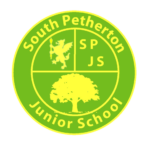Our School Offer for Design and Technology
Within the Purpose of Study for Design and Technology (National Curriculum 2014), we know that “Design and technology is an inspiring, rigorous and practical subject. Using creativity and imagination, pupils design and make products that solve real and relevant problems within a variety of contexts, considering their own and others’ needs, wants and values.”
What do we mean by Design and Technology (DT)?
Design and technology is a subject that explores designing and making products that solve problems, and then evaluating how successful the results are.
In KS2, we focus on the key aims of the National Curriculum:
• develop the creative, technical and practical expertise needed to perform everyday tasks confidently and to participate successfully in an increasingly technological world
• build and apply a repertoire of knowledge, understanding and skills in order to design and make high-quality prototypes and products for a wide range of users
• critique, evaluate and test their ideas and products and the work of others
• understand and apply the principles of nutrition and learn how to cook
How do we teach DT?
• Each child participates in two focused projects within the year (see class overview for technical focus eg. structures, mechanisms, electrical systems, textiles and nutrition & cooking)
• We teach a gradual development of DT skills; each child focuses on specific skills identified for the year group (see overview). Skills are embedded within the cycle of ‘Design, Make and Evaluate’.
• Children are encouraged to communicate their ideas through discussion, sketches and annotated diagrams using technical vocabulary
• Outcomes are recorded within the Class Floor Book; we believe that this makes us more creative and allows us to focus on active learning
• Projects are chosen, where possible, with clear cross-curricular links to enrich other subject areas eg. Year 4 design torches to link with their Science unit on Electricity
How do we inspire a love of DT?
We believe DT inspires a curiosity into how things are made and the inventions of things past and present. We believe that we can motivate children through planning exciting projects that give them the autonomy to explore, research and develop their own ideas and creativity. It is explained to the children that the skills taught through our engaging projects are transferable meaning children can participate successfully in our ever changing world.
How do we address gaps in pupil’s knowledge and skills in DT?
Through using our progression of skills, staff are aware of how skills can be adapted to suit the needs of all children. Where children have been assessed as not standards within their previous year group or within their lesson, adult support is put in place.
How do we assess DT?
Each child is assessed against the key D & T skills; this may be though observation, approach to a planned task or outcome. Staff record whether a child is working below expectations, working at expectations or exceeding expectations.
How can Parents/Carers help?
Many Parents/Carers encourage creativity at home and enrich their children’s lives through trips to Museums, Galleries & Exhibitions. This is key to all children understanding their ‘Cultural Capital’ (This is the essential knowledge that pupils need to be educated citizens, introducing them to the best that has been thought and said and helping engender an appreciation of human creativity and achievement’.)



